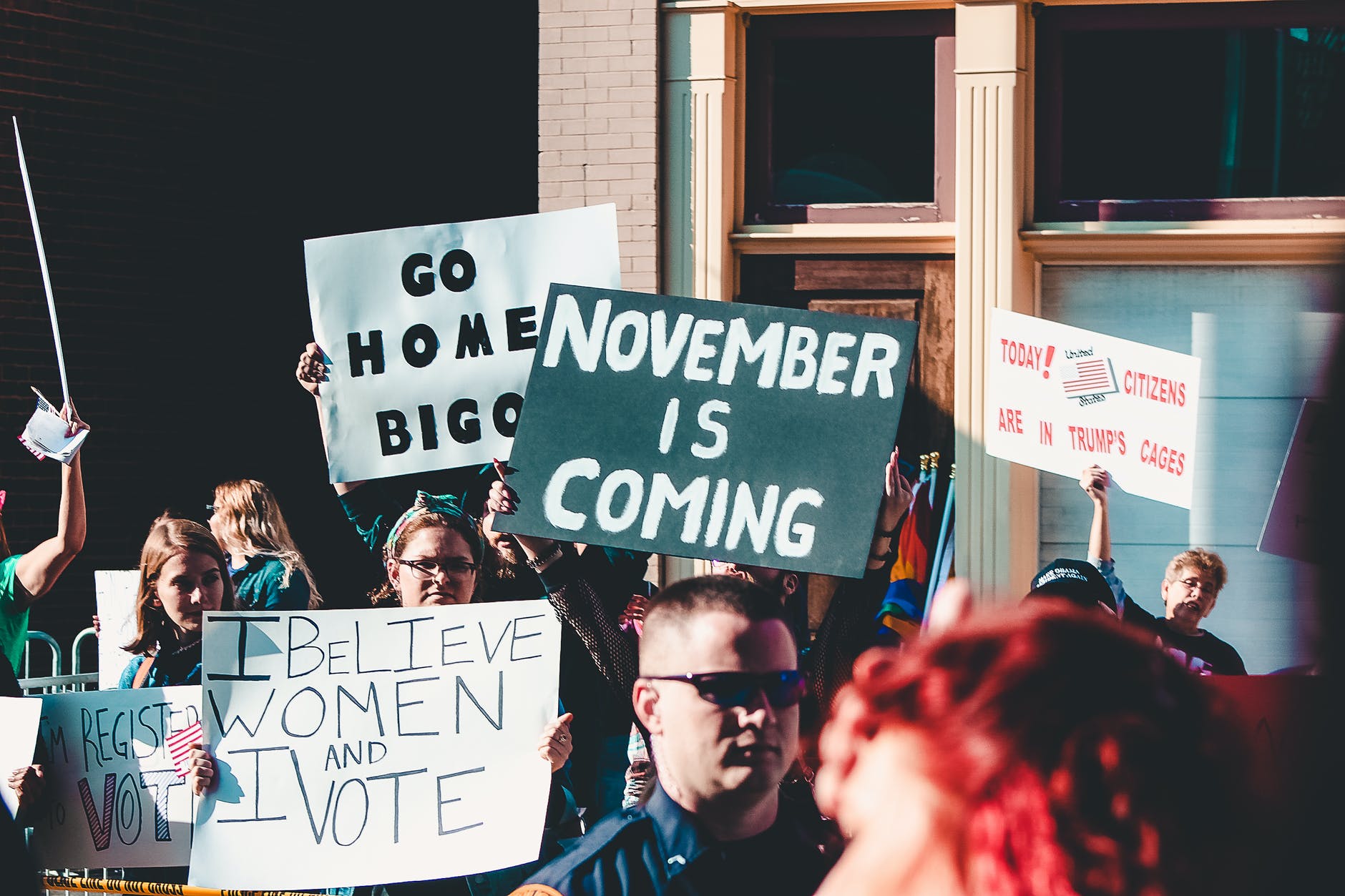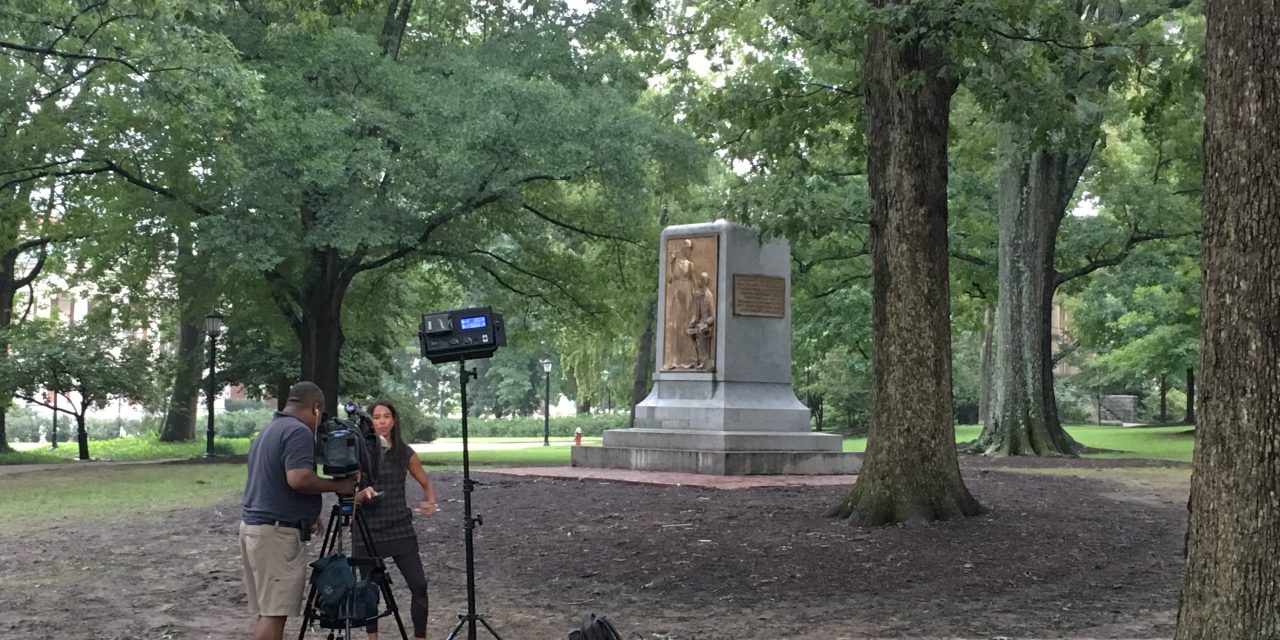 He is like the houseguest who stays too long, and then when he’s finally gone, you miss him a little bit.
He is like the houseguest who stays too long, and then when he’s finally gone, you miss him a little bit.
I am talking about Silent Sam, the Confederate memorial statue whose presence over a hundred-plus years on the campus of the University of North Carolina at Chapel Hill ended last week.
On the Monday night before the opening day of classes, a large crowd gathered to continue the ongoing protest of the statue’s prominent presence on the campus. Police were there to keep order and, as they have done for months, protect the statue from damage. But before the evening was over Silent Sam had been pulled to the ground and campus officials had removed his remains to an undisclosed location.
For the protesters and many students and faculty, the statue represented the glorification of the slave-based society that Confederate soldiers fought to defend and the white supremacy culture that prevailed when the statue was erected in 1913.
Others throughout the state argued that the memorial to the fallen soldiers was simply that, a respectful tribute and reminder of the glory and the horror of brave people who gave their lives in wartime conflict.
Writing for the Raleigh News & Observer on the day after Silent Sam came down, retired editor and Pulitzer Prize winner, Ed Yoder, explained his attachment to the memory of his great grandfather, who died in battle in 1864, “has little to do with racial pride [or] … accord with the Confederate cause as it would have been understood … For a remote descendant the satisfaction … lies in a sense of rootedness … a continuity with the history of a nation so largely shaped by conflict.”
For Yoder, Silent Sam was “a remembrance of duty and self-sacrifice that I have known as an unoffending visual companion since boyhood. Perhaps that is why its mob destruction is like the severing of a limb. And it hurts.”
On the other hand, an editorial in the Wilmington StarNews of Aug. 23 set forth the following, “African-American students at UNC, which refused to admit black undergraduates until a federal court intervened in 1955, should not be greeted at the campus doorsteps by a prominent symbol glorifying the cause of white supremacy. While some people want to brush off the power of the statue’s symbolism, our nation’s ugly history on race doesn’t provide such a luxury.”
The statue has been for many students and faculty a part of a hostile campus atmosphere and who believed it should have been removed long ago. University officials, however, declined to act, asserting that state law prohibited the removal or relocation of the monument.
Ironically, a few days before Silent Sam came down, Hampton Dellinger, an attorney for the Black Law Students Association, a faculty member, and several other students wrote to UNC officials demanding Silent Sam’s removal, threatening a lawsuit, and asserting that the memorial fostered a racially hostile environment, which would be a violation of federal civil rights laws.
Dellinger contended, “Because of UNC’s overriding obligation to comply with federal anti-discrimination laws. UNC is not only free to remove Silent Sam in order to adhere to federal law, it is legally obligated to do so.”
No doubt Dellinger will use these arguments in the coming debate about whether to reinstall the monument.
I admit that I miss him. He was part of the familiar and comfortable campus landscape. Like Ed Yoder, I do not believe that my affection for and pride in southern culture is racist.
But the better part of southern culture is concern for the comfort and well-being of our neighbors. If Silent Sam projected racism to them, it is better that he does not come back.
D.G. Martin hosts “North Carolina Bookwatch,” which airs Thursdays at 5 p.m. and Sundays at 11 a.m. on UNC-TV. Preview the upcoming program on UNC-TV’s North Carolina digital channel (Spectrum #1276) on Tuesdays at 8 p.m.
This Thursday’s (August 30) and Sunday’s (September 2) guest is Daniel Wallace, author of “Extraordinary Adventures.” Next week’s guests are Alex Harris & Margaret Sartor, authors of “Dream of a House.” To view prior programs: http://video.unctv.org/program/nc-bookwatch/episodes/
Related Stories
‹
![]()
One on One: When Do We Change Names and History?Last week the Raleigh City Council removed the historic designation of Wakestone, the former home of Josephus Daniels. That action is just one more reminder of North Carolina’s and the nation’s struggle to find agreement on what people should be honored and what versions of history should be taught in our schools. The unanimous action […]
![]()
One on One: Jim Crow Is Still Alive in North CarolinaUnbelievable when you think about it, how North Carolina maintained its segregated and discriminatory racial system for such a long time. The remnants of what is commonly called “Jim Crow” are still with us, a daily reminder of the horrors of the past. A new book, “Jim Crow in North Carolina: The Legislative Program from […]

One on One: Books for Holiday GivingIf you are worried about holiday gifts or selections for your book club’s reading, here are some good North Carolina-connected books to consider. Three beloved North Carolina authors have new books that would be perfect for fiction fans: Allan Gurganus, author of “The Oldest Confederate Widow Tells All,” gives us a crop of his best […]

One on One: Greek and Hebrew Guides to Our Political DifferencesHow can ancient Greek and Hebrew thinking help us understand why our friends who support other political candidates see things so differently from us? Why are we locked into such different positions? It is dangerous for anyone to try to explain why people support opposing political figures or different political parties or programs. We sometimes […]

One on One: North Carolina's GodfatherDoes North Carolina have a godfather? We would not want our godfather to be anything like Mexican Gen. Salvador Cienfuegos Zepeda, who is called “El Padrino,” which means “The Godfather.” Zepeda was arrested last week and charged with helping a drug cartel smuggle thousands of kilograms of cocaine, heroin, methamphetamine and marijuana into the United […]

One on One: President Trump and Nicholas SparksWhat do President Donald Trump and the lead character of Nicholas Sparks’ latest book have in common? Hint: Walter Reed Medical Center. Both the president and Trevor Benson, the fictional main character in Sparks’ “The Return,” received critically important treatment at Walter Reed. Trump got expert medical care for his coronavirus. Benson, a Navy surgeon, […]

One on One: Fighting for AmericaWe both love America? We would fight for our country. And we would fight to keep it the way we love it. And we would fight to make it the way we could love it more. It is just that we love different Americas. Even before the president was struck down by the coronavirus that […]

One on One: Religion, Too Much or Not Enough?Is Joe Biden too Catholic? Or not enough? Has Donald Trump corrupted the leaders of conservative religious groups? Religion is everywhere, even in four important books featured during the next few weeks on North Carolina Bookwatch. In Charlotte doctor and author Kimmery Martin’s “The Antidote for Everything,” the lead character is not deeply religious. However, […]

One on One: Who Wins the Debate About Debates?What is more interesting than the upcoming debates between candidates for major political offices? Of course, it is the debate about the debates. Some friends, well-informed and experienced in political activities, say the importance of such debates is vastly overrated. For instance, one said the recent first debate between North Carolina U.S. Senate candidates Republican Thom […]

One on One: Losing Randall KenanHe had to tell me that my beloved Uncle Remus was not coming back—ever. Randall Kenan was jovial, kind, and wise, not unlike the Uncle Remus he was taking away from me. Kenan, died last week at a much too early 57. Like Uncle Remus, he was an expert on trickster stories, mainly based on […]
›
 He is like the houseguest who stays too long, and then when he’s finally gone, you miss him a little bit.
He is like the houseguest who stays too long, and then when he’s finally gone, you miss him a little bit.










It is so surprising to me that so many people can be so ignorant and remain that way for so long. That war had nothing to do with slavery! Lincoln wanted the South to pay for the brunt of the Federal Government and levied an almost 50% tariff on the South to do so (taxation without representation). The South could not afford to pay that and Lincoln told them that if you don’t, I will invade you with an army of 75,000 men (to beat you into submission). The Southern States started succession and Lincoln provoked the war by blockading Southern harbors and beefed up Ft Sumter (an act of war). The Confederacy became what was actually the United States of the South! Those students who left school did so to defend home, family and friends against the marauding, murdering, raping, looting, arsonist destroyers of all things dear to the people of the South fighting for State’s Rights and Freedom! Silent Sam represents those students who left the college to defend the South against this travesty of justice. They fought for white and black both as did at least 15,000 armed black confederate soldiers (upward of 75,000 blacks were part of the Confederacy). The slavery issue was an attempt by Lincoln 18 months into the war, while he was losing his war, to try to give a moral reason for his unconstitutional, illegal, immoral and unjust war. Shame on those people who have distorted the truth into what it is not. Silent Sam is there in remembrance to honor those students from the college who left and fought that horrific war brought on by Lincoln. It was thrust upon the South and if it be known a largely unwilling conscripted Northern people were sent by Lincoln to fight his bloody war. There is no white supremacy in this! Shame on an ignorant people who don’t even care to get to the truth!